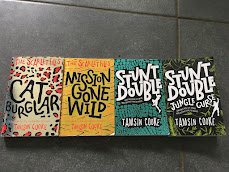I have read many books on the craft of writing, but Writing for Emotional Impact completely blew me away. It shows how stories come alive when readers are emotionally connected and it gives practical advice on how to achieve this.
It's written by Karl Iglesias, a screen writer, script doctor and consultant who specialises in readers' emotional responses to the written page. Throughout the book, he doesn't tell you what to do. Instead he gives you the tools so you can do it yourself. Even though the book is aimed at scriptwriters, I believe it's useful for writers of any type of fiction. And it makes complete sense. A story can be filled with great characters and a fabulous plot with twists and turns, but it will still fall flat if it doesn't elicit any emotion.
Iglesias talks about the three types of emotions:
Voyeurstic emotions which 'relate to our curiosity about new information, new worlds, and the relationships between characters.'
Vicarious emotions: 'When we identify with a character, we become them. We feel what the characters feel. We live vicariously through them, and it's no longer a story about a character in a struggle; it's about our struggle.'
And finally, visceral emotions. These include 'interest, curiosity, anticipation, tension, surprise, fear, excitement, laughter etc... If your script delivers a fair amount of visceral emotions, it will give the reader a sense of having been entertained.'
He goes onto explain the difference between character emotions and reader emotions. For example, a character might be under stress in a comedy, but the reader laughs, thus not sharing the same emotion. Iglesias believes 'whether your character cries is not as important as whether the reader cries.'
He quotes Gordon Lish who said, 'It's not about what happens to people on a page; it's about what happens to a reader in his heart and mind.'
The book is easy to follow with sections covering concept, theme, character, rising tension, structure, scenes, description and dialogue - and connecting them all with emotional engagement.
He explains what makes a concept appealing, and how a great idea is often uniquely familiar. He shows why themes matter, and gives you the tools to find your own vision and how to reveal them subtlely. Iglesias suggests ways in which we can get readers to connect to our characters, how we can captivate empathy and reveal transformation of our protagonists. He explains the difference between story and plot, and shows how to engage the reader from beginning to end through emotion. His tips on sneaking in exposition are incredibly useful. For example, having a character needing to reveal backstory in a stressful environment turns a passive scene into one filled with suspense.
I learnt so much from this book and found it invaluable while editing. It is now one of my favourite resources.
Tamsin Cooke
Author of The Scarlet Files Series and Stunt Double Series
Website: tamsincooke.co.uk
Twitter: @TamsinCooke1
Twitter: @TamsinCooke1







3 comments:
Oo, that's good to know about. Thanks, Tamsin!
I found it really useful, Pippa. Xx
That sounds really interesting. Thanks.
Post a Comment